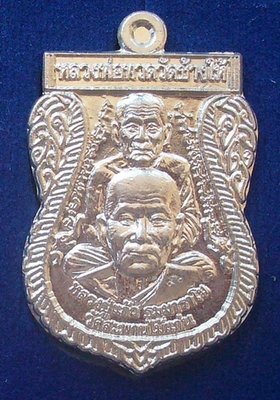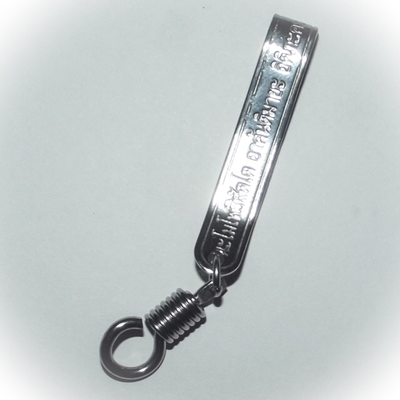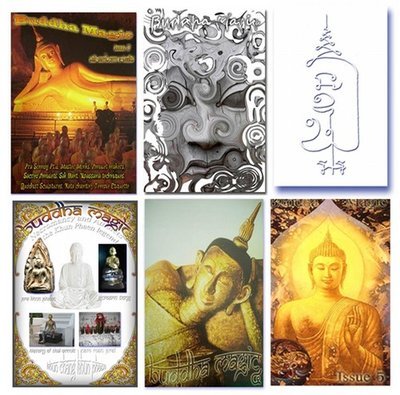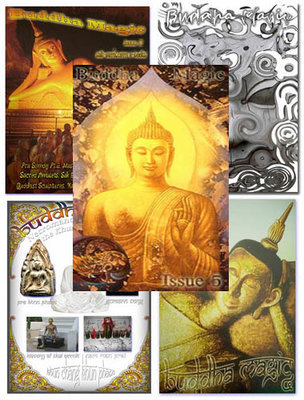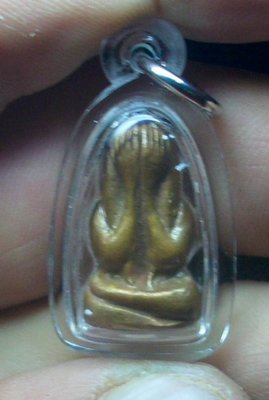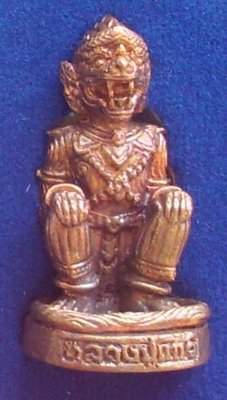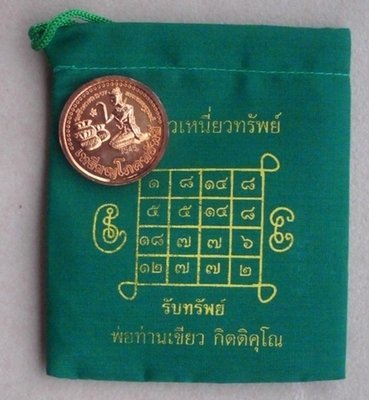

Thailand Amulets
Thai Buddhist and Magical amulets for Wealth, Health, Love and Happiness.
Vast Selection of Amulets
We have a vast selection of over 4000 different kinds of Sacred Amulets and Bucha Items, including Buddha Image, Loi Ongk statuettes, Buddhist Monk Coin Amulets, Takrut Charms, Nam Man Prai Oils, Mai Kroo Wands, Mitmor Ritual Knife, Lek Lai Kaya Siddhi Elemental Substance, Kumarn Tong, Gambling Amulets, Mae Nang Prai, Muan Sarn Sacred Powder Amulets, Palad Khik, Animist Charms, Necromantic Amulets, Buddhist, Animist, Brahman and Necromantic Amulets.
Luang Phu Tuad Benjapakee 5 Amulets Gammagarn Set Kathina Robe Ceremony Edition 2558 BE Por Tan Khiaw Wat Huay Ngo
Pra Luang Phu Tuad Benjapakee Kathina Robe Ceremony Edition 2558 BE Amulets in Gammagarn Collector's Set. The set comes in a boxed edition, with five different models of Luang Por Tuad Amulets, gathered into one box set. This edition was released during the 2558 BE Kathina Robe Ceremony, and Empowered from Por Tan Khiaw, of Wat Huay Ngo.
All of LP Khiaw's amulets are made by fine artistans and from the finest and most sacred components. This Luang Por Tuad set of amulets is very finely crafted and detailed, and adherent to the original models which they comemmorate, and can be considered Excellent Master craftsmanship for a Commemorative Sacred Votive Tablet of the Modern Era, blessed by one of the Lineage Masters of Luang Phu Tuad's Family of associated Temple.

Model in foreground of above photograph, is Luang Phu Tuad Pim Tao Reed Yai, the largest of the three arch shaped votive tablets. Three arch shaped, and two oblong four sided amulets compose this Gammagarn Set of Luang Phu Tuad Amulets.

Above; Rear face Pra Luang Por Tuad Tao Reed Yai with 4 other Luang Phu Tuad amulets in background
Luang Por Khiaw or, ‘Pra Kroo Anusaasanagijatorn’, of Wat Aranyawasigaram (locals call the temple ‘Wat Huay Ngo’), in Pattani. The local Folk call him ‘Dta Luang’ or ‘Dta Luang Khiaw’. Born; August 2472 BE in Tambon Hnaa Tham, Yala Province. Mother and Father; Nai Tong Paetch Pakdee, and Nang Gim Nuan Sri He left school at the class of Por 4 and had to work to look after his younger relatives, because his Father had already passed away.

Ordination as a Bhikkhu; He was ordained at Wat Buppanimit (Wat Nang O), in Mae Laan, Pattani. His Upachaya (Ordaining Officer), was Pra Kroo Manunyasamanagarn of Wat Palaanupaap. Dhamma study; He studied Bpariyadtitam (theoretical Dhamma) and ‘Nak Tam’ (next graduation of doctorate), specializing in both the sector of Mantra and Prayer chanting and Ceremonies. He was able to chant the Patimokkha completely after a mere 5 years of Ordination.

Apart from this, he studied various Wicha of Saiyasart from many different Lay Masters, who shared their Magical Knowledge with him, passing on their Wicha to Luang Por. Wadtumongkol (Amulets) by LP Khiaw; Luang Por Khiaws amulets are very favoured, but some are extremely in demand more than others.

The ‘Wadtumongkol Niyom’ (preferred amulets) of Ajarn Khiaw are; Pra ‘Luang Por Tuad’, ‘Pra Pid Ta Mai Gae’ (hand carved sacred wood Pid Ta amulets), Pran Bun Manorah Masks,Jao Ngo Pha JInda Manee Deva amulets, ‘Pha Yant Rap Sap’, ‘Yant Rap Sap’ and ‘Yant Perm Sap’ – ‘Khun Chang Jao Sap’ (Khun Chang Maha Sethee – millionaire magic), ‘Pra Rahu, and perhaps most famously of all, his ‘Palad Khik‘ phallic amulets, which are highly renowned for their effectiveness

Above; Pra Luang Por Tuad Pim Glak Mai Kheed Gammagarn
Por Tan Khiaw is one of the Great Southern Khao Or Master Guru Monks, residing as Abbot of Wat Huay Ngo temple, in Pattani. His fame for empowering amulet of the Luang Phu Tuad lineage mastery is eminent and internationally known.

He has a very cult following of devotees who have built their faith on the power of the amulets of Por Tan Khiaw. This amulet is not only a powerful amulet from Por Tan Khiaw, with the protective and wealth increasing, and Karma reducing powers of the Bodhisattva Luang Phu Tuad, it is indeed also a most pristine collectors piece and a fine example of Buddhist Minature Fine Art..

Above; Pra Luang Por Tuad Pim Glak Mai Kheed Gammagarn Pid Tong
Luang Por Tuad is, along with perhaps Somdej Pra Puttajarn (Dto) Prohmrangsri (Wat Rakang Kositaram), and Luang Phu Taep Loke Udorn, the most famous and legendary Guru Monk of all Thai Buddhist History.

Above; Pra Luang Por Tuad Pim Niyom

Above; Pra Luang Por Tuad Pim Tao Reed Yai

Above; Pra Luang Por Tuad Pim Lek (Pim Pra Rod)
Kata Luang Por Tuad
Namo Dtat-Sa Pakawa-Dto Araha-Dto Sam-Maa Sam-Put-Dtat-Sa
Namo Dtat-Sa Pakawa-Dto Araha-Dto Sam-Maa Sam-Put-Dtat-Sa
Namo Dtat-Sa Pakawa-Dto Araha-Dto Sam-Maa Sam-Put-Dtat-Sa
Luang Pu Tuad is known by all Thai people in every Province. Sometimes he is known as “Luang Phor Tuad” and sometimes “Luang Pu Tuad. “Pu”, meaning “grandfather” and “Por” meaning “Father”. It depends on the age of a monk whether he is called Luang Pu, Dtaa, Por, or Pi. He is possibly most famous with the common folk for his legendary powers and for the miracle of turning seawater into drinking water. This is in fact his nickname; “Pu Tuad Yiab Nam Tale Jerd” (Pu Tuad stepping over the seawater and turning it to fresh water). This legend has become so widespread on a National level that it is common knowledge in every region. But Luang Pu Tuad was a real person, he really existed.There are a number of amazing Legends about Luang Phu Tuad, which have served to raise this Guru Master to the Highest Status, alongside and independently of the Great Somdej Pra Puttajarn (Dto) Prohmrangsri of Wat Rakang Kositaram.

Luang Pu Tuad was born about four hundred years ago,towards the end of the Reign of King Maha Tamaracha of Krung Sri Ayuttaya, in Suan Jantr village in the municipality of Chumpola. His birth came one Friday in April in the Buddhist Era 2125 (Chinese year of the Dragon).

As a child, although having been born into an extremely poor family, he still was renowned for his compassionate and generous attitude. He liked to make merit (called “tam bun” in Thai) both in the Buddhist temples and in everyday life with his kindness to others. He never hurt other living beings, be they human or animal. The young Luang Pu Tuad then was called by the nickname of “Luang Poo” (meaning “crab” in Thai). His Father and Mother were called Mr. Hu and Mrs. Jantr. Luang Pu Tuad was already displaying his miraculous powers from a young age, when one day, his mother went out in the garden and saw that an extremely large snake had wound itself around the hammock where her child, the young baby Luang Pu Tuad was sleeping.

The snake would not permit anyone to approach near to the hammock and the child. After watching for some time, the parents decided that this giant snake was an angelic Deity come to show the special merit of their child. So they went and got some puffed rice, flowers and incense and rushed back to offer it to the snake, in reverence. When they made the offerings to the great snake, it wound itself out of it’s embrace with the hammock that baby Poo was sleeping in, and left. The relatives all rushed straight over to the hammock crib with great concern for the baby’s safety. But to their surprise, the baby was not only sleeping safe and soundly, but, on his chest, was a multicolored crystal, glowing with strange radiance. His parents kept it, and since then, the family managed to survive a lot more easily, and were successful in their business activities.

At the age of seven, the young Luang Por Tuad was taken to Wat Gudti Luang, in order to learn to read and write, and obtain some schooling. But the young boy was exceptionally diligent, and was quickly able to read and write Khom script (Pali text using ancient Khmer script). At the age of 15, he was ordained as a Samanera (novice monk), and his mother gave him the Mystic Crystal to keep with him always. After this, the young Samanera (Naern Pu) was sent to learn with Somdej Pra Chinsaen at Wat See Hyong , where he stayed until his ordination as a full Bhikkhu, – he then continued his studies in Nakorn Sri Tammarat at Samnak Pra Mahatera Biya Tassee.

His Ordained name was Ramoe Tammigoe, but common folk preferred to call him “Jao Sameeram”, or “Jao Sameeramoe”. So Jao Sameeram (Luang Por Tuad) to study on at Wat ta pae, Wat Sima Mueang, and many many others too. After completing hs studies in Nakorn Sri Tammarat, he asked for permission to go by Sampao boat to Ayuttaya. As the boat was passing the Chumporn district of coastline, a hefty storm arose, waves bashing against the hull, wind screaming through the sails, and they were forced to drop anchor and remain where they were for a period of 7 days. The seamen became superstitious, and started making suppositions that “Jao Sameeram” was the reason for this terrible storm, and decided to ask the young monk to leave the boat and go to the nearby island on the rescue boat. As the young Luang Por Tuad was traveling to shore in the rescue boat, he dipped his feet into the surface of the water.

To everybody’s surprise, the water around Luang Por Tuad’s feet began glittering and sparkling with a glowing light. Luang Por Tuad then told the seamen to scoop up some of the water and drink it; The water they took was sweet water, not salt water. Because of this the Captain of the boat was saved and had provisions to last, and he asked Luang Por Tuad to return back to the boat and continue the journey with them after all. As of this moment, “Jao Sameeram” or, better known as “Luang Por Tuad” was known and respected as a “Gaeji Ajarn” (master Guru teacher). Once he arrived in Ayuttaya, he installed himself in Wat Kae temple, and studied Dhamma at Wat Lum Plee Nawaas, after which he went to reside at the temple of “Somdej Sankarach” (head Royal Bhikkhu), and continued to study Dhamma and Pali language.

He advanced until the pint of mastery and then asked to leave Somdej Sangkarach and go stay at Wat Rachanuwaas in approximately the year 2149. Then came the day when the name of Luang Por Tuad was to resound in the ears of the folk in all the provinces of the Kingdom of Siam. This was due to a strange occurrence in this time of Somdej Ekatosarot; It appears that Pra Jao Wadtakaminee the Ruler) of Sri Langka whose country was once annexed by the Southern Thais (called the “Hlaem Tong” in Thai), and wanted to revenge this fact. He decided he wished to take control of the Thai City of Ayuttaya. But the Ruler of Langka did not wish to cause the death of his or the enemy Citizens, so sought out a peaceful and clever manner to take the City instead of a violent one (War).
So he ordered his servants to go and remove gold from the treasury; he then ordered the Royal Mint to make gold coins with letters in Pali language, each about the size of a Tamarind leaf. These letters were created in the same order as the whole Abhidharma (Buddhist Sutras) which has 84 thousand units in it. Then he ordered an old Brahmin merchant to to gather 7 large ships and fill them with fine silks and clothes as well as other sundries of high value, and to travel along with him to Ayuttaya, along with the Great Abhidhamma in the form of golden coins. As the Brahmins reached Ayuttaya, they presented themselves to the Ruler “Pra Jao Ekatosarot”, first giving all the fine silks and sundries, and lastly, presenting the 84 thousand coins with the Abhidhamma on them.

He then said to the Ruler of Siam, that he should start translating each letter of each coin in sequence, until the end of the Abhidhamma, and he should be able to finish it in a period of 7 days. If he was unable to complete the attempt, then Ayuttaya should fall under the rule of Pra Jao Wadtakaminee (the Sri langkan Ruler), and would have to send flowers, silver and gold, taxes and praises to Sri Langka, each year, for all time. When Ekatosarot realized what was happening, he called an audience with all the Council of Bhikkhus and Maha Teras to come and help in the translation and placing in sequence of the Abhidhamma coins.
But try as they wished, no one was able to achieve enough speed to be able to get the job done in time, before the seven days were up. It seemed like the City of Ayuttaya was going to be lost to the Sri Langkan enemy. The rumors began spreading around the Land, and the people began to become nervous and afraid. One night, the King Pra Jao Tosarot was sleeping, and he dreamed of a white elephant approaching from the West, the elephant entered the royal patio and climbed on a dais and started hooting in all 4 directions with such a loud sound. This caused the King to awaken from his sleep – he was disturbed by what this dream could mean? The king then conferred with the Royal Astrologer, who was expert in interpreting dreams, and was told that the dream meant that this was to be the greatest victory for his Kingdom.

In addition, the astrologer informed the King that a young monk would wander in from the West and help to count the wondrous 84,000 coins of the Abhidhamma treasure from Sri Langka before the deadline was up. The King then ordered his servants to go out and search for the Young Bhikkhu. After some time, they found the Young Luang Por Tuad at Wat Rachanuwaas – after questioning him and listening to his accounts , it was decided that this was the only monk who fitted the description of the one predicted from the King’s dream, and urged Luang Por Tuad to go to the Palace with them to help counting and translating the coins. As Jao Sameeram (Luang Por Tuad) arrived at the palace, the Council of Royal Monks gathered to discuss the matter in the King’s courtroom. The King ordered a carpet to be laid out for the young Jao Sameeram, and for the coins to be brought by the 7 Brahmins.

The Brahmins joked at the young Bhikkhu, saying “you want to bring a child to do a man’s work? how can someone so young be able to count?” But Luang Por Tuad answered quickly “a baby is ejected from his mother’s womb after 9 months, and after only a few seconds he learns how to lie down. the after a few days he can lie on his stomach, then he can sit, … do you have to grow old first before you sit? do you need to be old to know how to lie down?” The Brahmins were silenced by this and didn’t know what to say in answer to the quick and clever young Bhikkhu, and so they got the pots of golden coins and followed Jao Sameeram into the hall to begin counting. Luang Por Tuad then began to summon the assistance of the deities with “Through the power from my Mother and Father, the power of my Guru Ba Ajarn, the Merits of my past actions in all lives, the power of the Deities, and heavenly Celestial Beings.
May the Deities that watch over this City prevail, and assist me in having a clear and concentrated mind. May they help me. in order to overcome any obstacles that might stand in my way – to help me to save the City and it’s people. Please let me succeed in translating the Dhamma that is inscribed on these coins. So then Luang Por Tuad began immediately counting and translating – placing the coins in order. The Brahmins began to become astonished to see him arrange the Abhidhamma in sequence with incredible speed, and finally, he was able to place all the coins in their proper sequence, until there was a small incident; as Luang Por Tuad was progressing, it appeared that there were seven coins missing from the part he was currently arranging.

These 7 letters on the coins that were missing form the Kata “Sang Wi Taa Bu Ga Ya Bpa” *** Luang Por Tuad then asked the Brahmins if they knew anything about the seven coins, and after being thoroughly questioned, all admitted their guilt and produced one coin each from their pockets. Luang Por Tuad was then able to continue, and incredibly, managed to finish the whole Abhidhamma in that same evening. This was the great victory over the Brahmins, and the Kingdom of Ayuttaya was saved.
The King was so overjoyed and offered to let Luang Por Tuad rule the Kingdom for 7 days. But Luang Por Tuad refused, on the premises that he was a monk, and not allowed to accept such things. The King then endowed him with the title of “Pra Rachamuni Sameeram Kunuphamajarn, or, “Luang Por Tuad. Shortly after these events, a terrible plague spread throughout the Province of Krung Sri Ayuttaya.

People were dying in masses and falling like autumn leaves, due to the fact that there was no medicine to treat the illness with. The folk began to become extremely worried, and so Somdej Phra Ekaatosarot Rachamunii Swamiram (LP Tuad) who was residing at Wat Kae, and thus sent a messenger to request him to come to the Royal Palace. Once there, Luang Pu Tuad then took his magic crystal and soaked it in water and chanted magical incantations into the water and then traveled around Ayuttaya spraying the prayer water on the inhabitants, whoever was ill, and came to ask for some prayer water to drink, was cured in a short time. The Province returned to its original state of health. The King of Ayuttaya was so indebted and pleased that he decreed that Luang Pu Tuad should only have to ask if ever he wished for anything and the King would bestow whatever he asked for.
After this event, LP Tuad wished to return to his home Province and asked for permission to leave – Phra Ekaatosarot was heartbroken to think of LP Tuad leaving, but agreed to allow this and arranged for a schooner boat with servants and necessary gifts and provisions to be prepared top escort Luang Pu home with. But Luang Pu refused such luxuries, and made his way home in a simple manner and resided at Wat Puttasingh Banpot Takoe close to his hometown of Ban Chumpala. When the locals heard of his return they were delighted and gave him the name of Somdej Jao Pakoe, in order to connect him with the local Temple and become part of it’s historical trajectory. Luang Pu saw that the temple was very dilapidated and decided to restore and improve it, but the problem was that the locals were very poor so it seemed a problem to raise funds, but when the King of Ayuttaya heard of Luang Pus plans, he sent a host of Elephants and money in 7 Sampao boats full of building materials to realize the restoration of the temple with.

It took many years to complete the restoration. One day Somdej Jao Pako (LP Tuad) was walking along the shore of the sea, when a pirate ship passed by and saw him – they were curious as they saw he had a shaved head and wore robes unlike the local villagers, so they trapped him and took him aboard their ship and sped off to sea. As they got out away from shore a little, the ship came strangely to a standstill, and refused to budge regardless of what the pirates did to try to set sail again.

The ship stayed there for days and the water provisions slowly ran out. Luang Pu felt compassion for the pirates and told them to lower him down to the sea surface – he then put his foot in the water, and to the pirates’ surprise, the water became cloudy like the water in the river canals. Luang Pu told them to scoop some up and drink it. The pirates found that the water was fresh water with no salt in it, and thus bowed to the feet of Luang Pu in reverence and begged his forgiveness for kidnapping him. They then returned him back to the shore where they had taken him. The locals were relieved as nobody knew where he had disappeared to and were extremely concerned as to his whereabouts.
***Note; The Kata Sang Wi Taa Bu Ga Ya Bpa, is also the first syllable of each of the six names of methods of arranging the Tripitaka, known as the heart mantra of the Tripitaka.
1. SANG = Sankinii; the arranging of the contents of Tripitaka by Dhamma categories.
2. WI = Wipanka; The arranging of the Dhamma of Tripitaka into topical sections, i.e. The Five Khandas, Three Conditions, Eightfold Path, Four Noble Truths etc. Sankinii and Wipangka can be tranlsated as “Synthesis” and “Analysis”.
3. Taa = Taatutagaa; Arrangement in Elemental categories – The various Dhammas are listed as belonging to verious Elements/Natures.
4. Bu = Bukkalabanyati – Arrangement into 6 different categories; for example, Khandabanyatai (the Khandas), Ayatanabanyati (the senses), and the different categories of persons (Bukkalaa) and their behavioral traits.
5 Ga = Gataawadtu; Arrangement of the Dhamma by way of question and answer – the number of questions and answers are said to be a list of 500 each, although this number is considered to mean “many hundreds” and not an exact number of 500, because as far as has been officially counted, only 219 questions and 219 answers are in evidence.
6. Ya = Yamaga ; Arrangement of the Dhamma into related pairs – this is then split into the three sections of Tripitaka.
7. Bpa = Bpataana; Synpsis of the Dhamma by way of “Bpaccaya” (supporting causes/influences). There are 24 Bpaccaya, which are also listed as first syllables of each category forming a further Kata;
Aa Bpaa Ma Ju Bpa Nii Ma Sang Ang Khu Sang Wi Taa Bu Ga Ya Bpa Ga Ya Bpa.
This whole list of ways of arranging the Dhamma contained in the Tripitaka is called “Abhidhammapitaka” – the Missing coins noticed by LP Tuad therefore are the syllables of the “Kata Hua Jai (heart mantra), of the Abhidhamma.

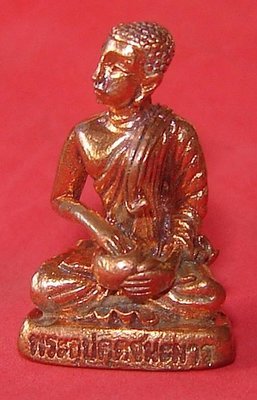
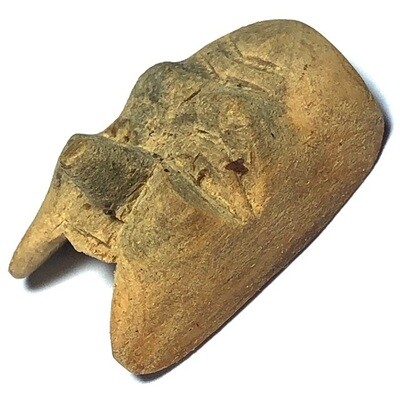

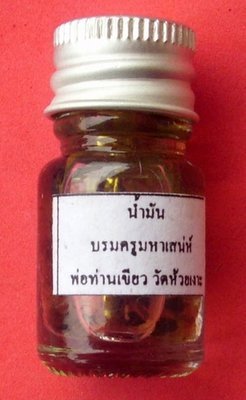
Contact Us
Follow Us on Youtube
About Us
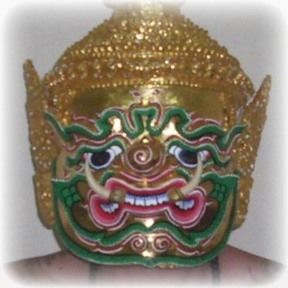
Ajarn Spencer
Proprietor
Thailand Amulets is owned and Administrated by Thai Occult and Amulet expert, Ajarn Spencer Littlewood who guarantees only authentic blessed amulets, and a free gift with every order, as well as his safe delivery or money back guarantee. https://facebook.com/ajarnspencer


